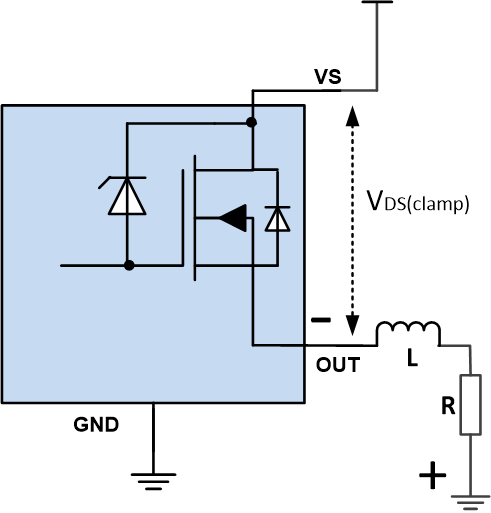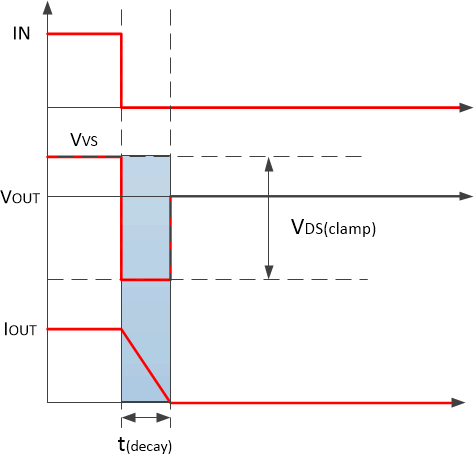SLVSDO6C August 2017 – June 2019 TPS1H000-Q1
PRODUCTION DATA.
- 1 Features
- 2 Applications
- 3 Description
- 4 Revision History
- 5 Pin Configuration and Functions
- 6 Specifications
- 7 Detailed Description
- 8 Application and Implementation
- 9 Power Supply Recommendations
- 10Layout
- 11Device and Documentation Support
- 12Mechanical, Packaging, and Orderable Information
Package Options
Mechanical Data (Package|Pins)
- DGN|8
Thermal pad, mechanical data (Package|Pins)
- DGN|8
Orderable Information
7.3.6.2 Inductive Load Switching Off Clamp
When switching an inductive load off, the inductive reactance tends to pull the output voltage negative. Excessive negative voltage could cause the power FET to break down. To protect the power FET, an internal clamp between drain and source is implemented, namely VDS(clamp).
 Figure 26. Drain-to-Source Clamping Structure
Figure 26. Drain-to-Source Clamping Structure  Figure 27. Inductive-Load Switching-Off Diagram
Figure 27. Inductive-Load Switching-Off Diagram